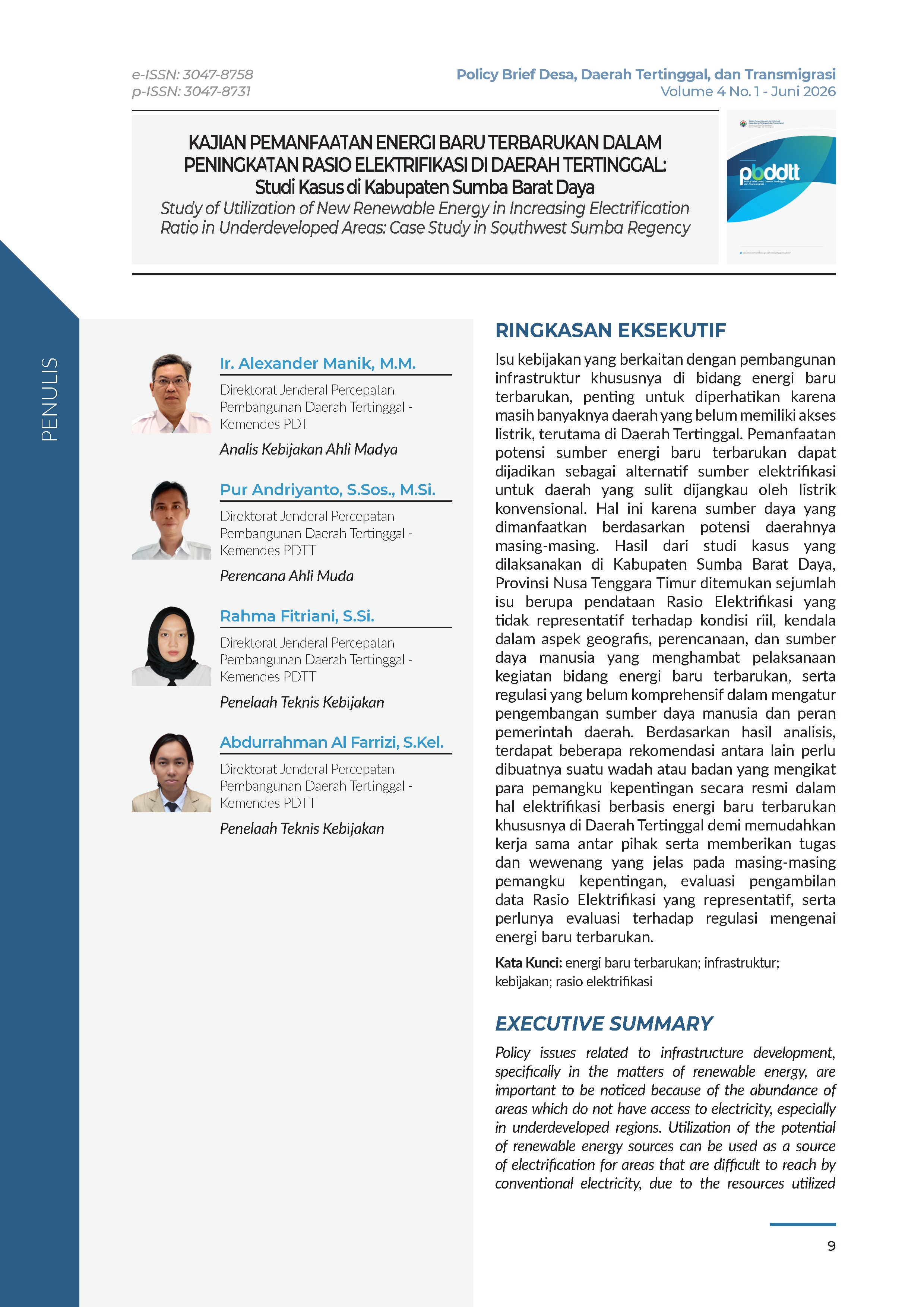Study of Utilization of New Renewable Energy in Increasing Electrification Ratio in Underdeveloped Areas
Case Study in Southwest Sumba Regency
Keywords:
electrification ratio, infrastructure, policy, renewable energyAbstract
Policy issues related to infrastructure development, specifically in the matters of renewable energy, are important to be noticed because of the abundance of areas which do not have access to electricity, especially in underdeveloped regions. Utilization of the potential of renewable energy sources can be used as a source of electrification for areas that are difficult to reach by conventional electricity, due to the resources utilized are based on the potential of each region. Result from a case study conducted in Southwest Sumba Regency, East Nusa Tenggara Province, several number of issues were found in the form of data collection on the Electrification Ratio that was not representative compare to the real conditions, constraints in geographical aspects, planning, and human resources that hampered the implementation of renewable energy, as well as regulations that were not yet comprehensive in regulating the development of human resources and the role of local governments. Based on the results of the analysis, there are several recommendations, including the need to create a forum or agency which officially binds stakeholders in terms of renewable energy-based electrification, especially in underdeveloped regions, in order to facilitate cooperation between parties and provide clear tasks and authorities to each stakeholder, evaluation of representative electrification ratio data collection, and the need to evaluate regulations regarding renewable energy.
Downloads


